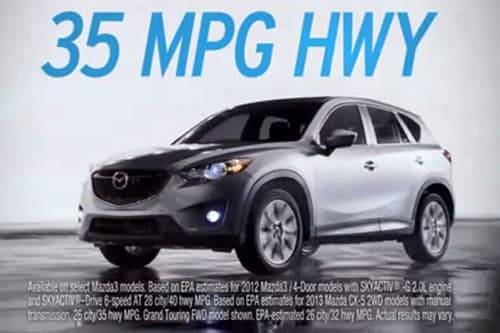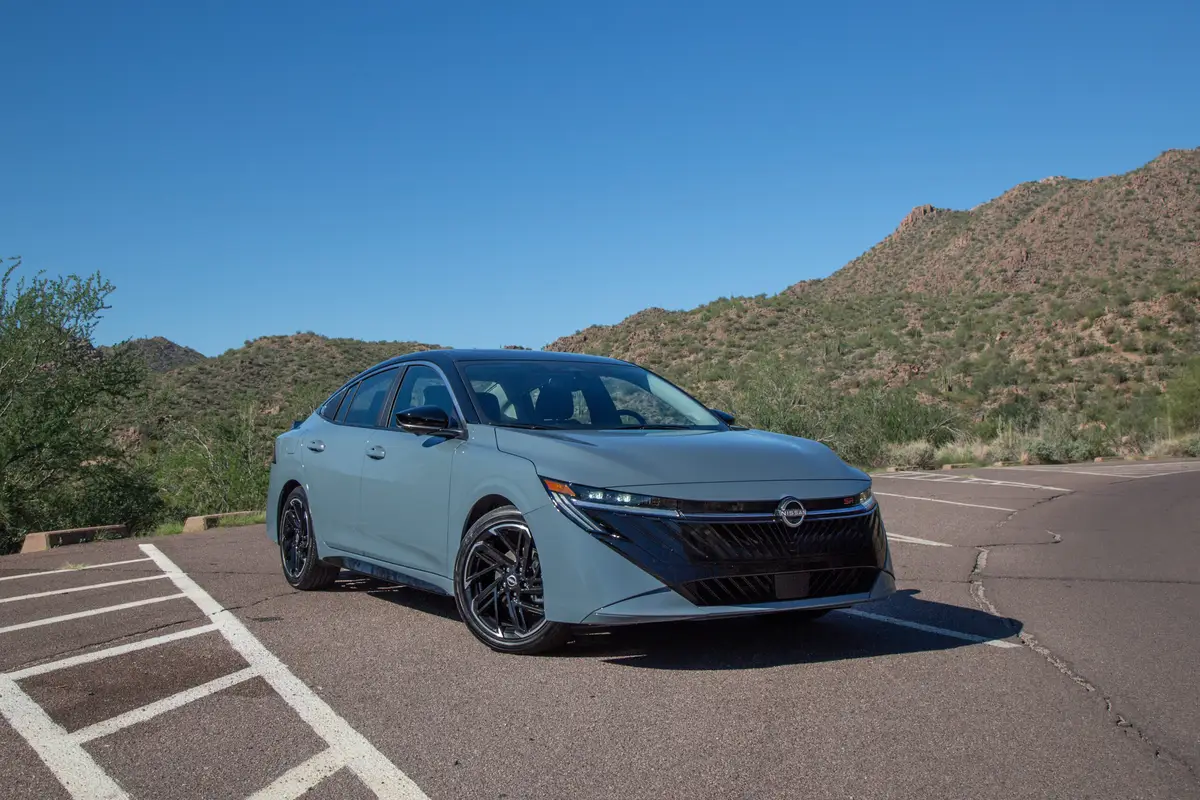Consumer, Environmental Groups Call for MPG Regulation in Car Ads


Ever get annoyed when car ads hype pie-in-the-sky mpg figures? Well, you aren’t alone. Advertisements are notorious for shilling highway-only mpg, sometimes for specific trims that aren’t widely available. Witness a Mazda commercial from 2012 that blared 35 mpg highway for the 2013 CX-5 SUV — an EPA figure only achieved by a front-wheel-drive, manual-transmission model. Or one of Ford’s 2011 Fiesta ads that rolled “40 mpg” across the backdrop, which only the automatic SE with the Super Fuel Economy package received in EPA highway ratings.
Related: Gas Prices Continue Upward Climb
Both ads clarified the details in the small print, but you’d have to pause the DVR and get out a magnifying glass to read it. If a group of consumer, environmental and safety advocates get their way, such practices could change.
In a July 10 letter to the Federal Trade Commission, nine groups called for additional regulation around when and how automakers advertise mpg ratings. Specifically, the groups proposed the following:
- Whenever an ad claims that a certain car is fuel-efficient, EPA gas mileage must clearly be represented.
- Whenever mpg is advertised, all three EPA figures — city, highway and combined — should be disclosed, with the combined figure emphasized (e.g., mentioned last in a radio ad or shown in the largest text size on TV).
- For shorter ads, just the combined number is allowable as long as it’s clear.
- Advertised claims for eco-optimized trims under the notion that shoppers could achieve “up to” said mileage should be banned. An automaker should have to emphasize the most popular configuration it expects shoppers to buy, after which it can advertise any mileage for the eco trim.
- All ads should derive mpg ratings from the EPA and list it as the source.
- If an ad mentions flex-fuel (e.g., E85) compatibility, then EPA mileage using E85 must be mentioned. (Because of E85’s lower energy density, cars that use it see considerably lower fuel economy.)
- For mpg-equivalent figures on electric cars, ads should disclose that mpg-equivalent ratings are for comparative purposes only. For plug-in hybrids or extended-range EVs, ads should show separate ratings for gasoline and electric performance.
“Advertisements which simply list an mpg rating with no description are clearly and intentionally deceptive,” the letter said. “While it is expected that such disclosures would typically use the single (and higher) highway number, most consumers would not know this is a highway-only number.”
Backers range from the Sierra Club and Union of Concerned Scientists to the Consumers Union, the lobbying arm of Consumer Reports, and the Consumer Federation of America. The letter comes in response to the FTC seeking comments as part of a regulatory review of the EPA’s Fuel Economy Guide announced May 1. At the time, the commission asked for feedback focused “on information that helps marketers avoid deceptive or unfair claims.”
“The FTC’s concern that mpg advertising disclosure not be deceptive is well founded,” the joint letter said. The commission closed comments after July 10, so stay tuned. We’ll keep you posted on any decision, and what it means for car ads.
Manufacturer image

Former Assistant Managing Editor-News Kelsey Mays likes quality, reliability, safety and practicality. But he also likes a fair price.
Featured stories




2026 Nissan Sentra Review: Long Live the Sedan

